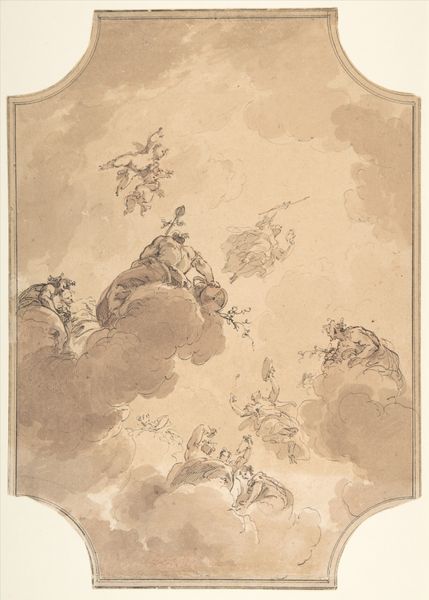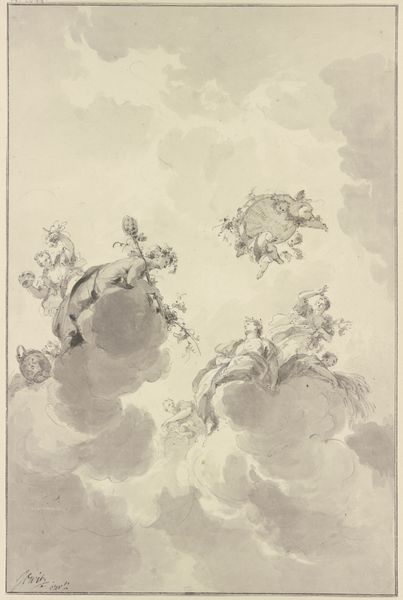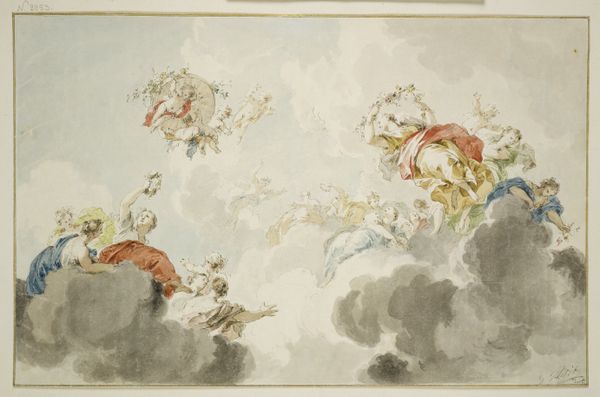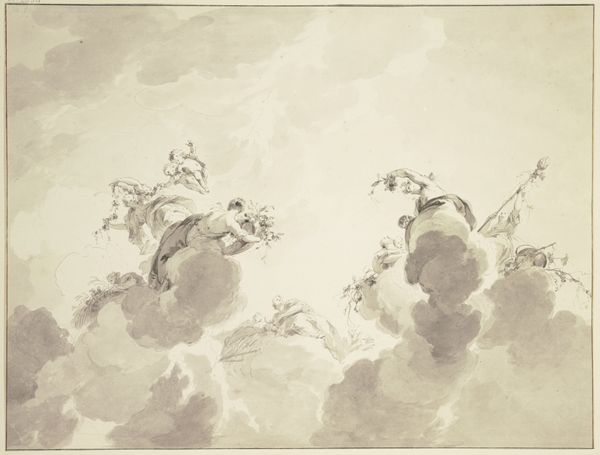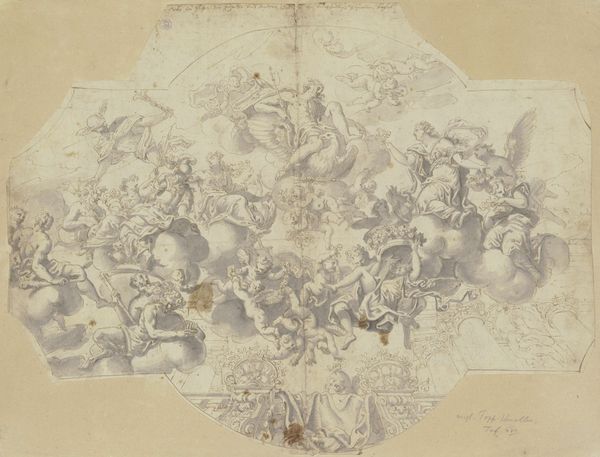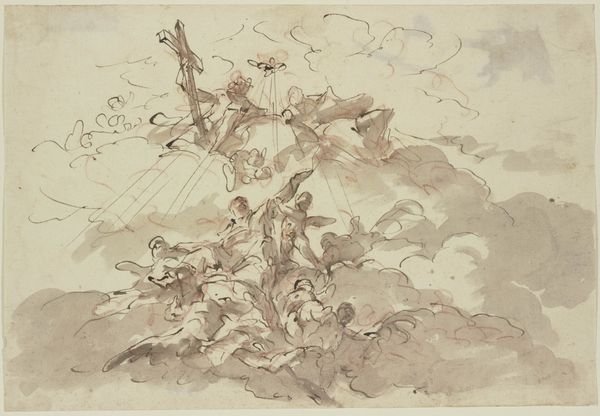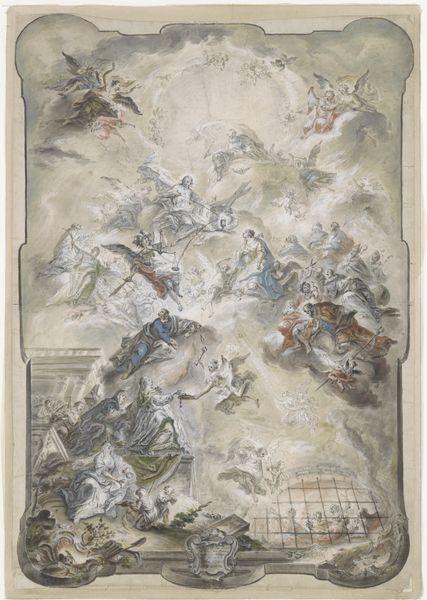
drawing, painting, watercolor, ink, indian-ink, pendant
#
drawing
#
water colours
#
allegory
#
baroque
#
painting
#
figuration
#
watercolor
#
ink
#
coloured pencil
#
indian-ink
#
pendant
Copyright: Public Domain
Curator: Ah, look at this stunning composition by Jacob de Wit, dating back to 1726. It’s entitled "Ceiling design_ Flora and putti," currently residing in the Städel Museum. You can really see his mastery in capturing light and airy mythological scenes using primarily ink and watercolour. Editor: My first thought is how ethereal it feels. The pastel shades drifting across the paper, evoking a dreamlike weightlessness with the cherubic figures floating in the clouds. Curator: Precisely! De Wit specialized in these trompe-l'oeil ceiling paintings, very popular within Baroque interior design. This drawing would have functioned as a preparatory study, showcasing his ability to create an illusion of limitless space. Editor: Notice the contrast, though. Even with the delicate watercolors, there is an inherent structure; the cherubs and the basket with the floral motifs forming an almost triangular symmetry amidst the randomness of the cloudscape. Curator: That balance speaks to Baroque ideals, seamlessly merging classical elements within these dynamically expressive arrangements. Figures such as Flora, the goddess of springtime and flowers, were also loaded with allegorical associations, conveying prosperity, peace, and beauty for the commissioner of the work. Editor: Do you think the medium, using watercolors and ink washes, lends itself specifically to the subject matter? The soft fluidity almost blurs the line between reality and imagined space… Curator: Absolutely! These monochrome and polychrome techniques also made his designs easily reproducible as large-scale ceiling frescoes which increased his market reach throughout wealthy merchant homes in Amsterdam. The artist himself had a history of converting from Calvinism to Catholicism, which made the commission and production of these allegorical figures more open for him. Editor: It’s amazing to think how a simple sketch translates to such large and immersive architectural features. These ceiling paintings essentially redefined domestic space by injecting narrative. Curator: Indeed. And by focusing on form and material execution, we often neglect the societal function behind them—reminders that artistic choices can, at their essence, redefine spatial ideologies within socio-cultural life. Editor: So while my initial response revolved around the delicate use of line and color, understanding the context gives another profound layer. These weren’t just aesthetic choices, but reflections of patronage and broader cultural values.
Comments
No comments
Be the first to comment and join the conversation on the ultimate creative platform.

